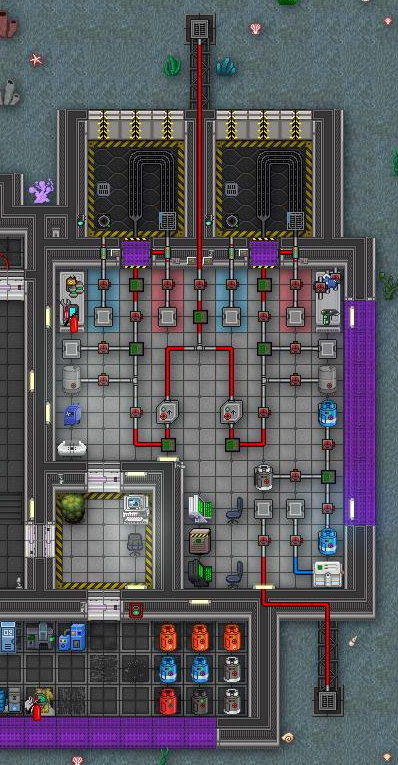User:Studenterhue/Sandbox
Plasma Research (generally known as Toxins) is where scientists intricately study the properties and capabilities of plasma. They do this by superheating plasma and using it to build bombs capable of ripping giant hull breaches into the station and killing everyone. Or, they might just cause an uncontrollable plasma fire in the escape arm or release super-heated carbon dioxide in the hallways, frying people from within. Generally only bad things happen in toxins, which is what makes it such a beloved part of the station.
| Don't test your bombs on the station itself unless you are a legit antagonist. |
|---|
General Practice
To connect a canister to a connector, simply drag it on top of the connector, then wrench it to connect. The gas will automatically start to flow through the pipes. The gas will proceed unless the valve is turned closed (red). The pipes into the combustion chambers are special--some are strictly outtake (gas will only flow towards the mixing room), and some are strictly intake (air will only flow out of the mixing room). More on them later.
To check out the contents of your canisters, use your scientist PDA's built in scanner on it. It will give you a summary of its total pressure, its contents by percentage, and its temperature.
Mixing
The T-shaped section of piping with three ports and valves is for combining the contents of multiple canisters into one homogeneous mix.
Heating
The combustion chambers is/are vacuum sealed room(s) where gas can be piped in, then ignited with a spark by pressing the igniter switch. The resulting hot mixture of gas can be pumped out of the chamber and into empty canisters through the adjacent outlet valves or used to heat whatever gases were feed into the chamber pipes. If the gas is a dud or the experimenting is finished, it can also be vented into space via the Combustion Vent switch.
Cooling
Disposal
Storage & Other
The storage room contains air scrubbers, a tank dispenser, and canisters of various types of gases, most notably, plasma and oxygen.
To test your bombs, use the special simulator equipment (for transfer valve bombs) or alternatively blow up something in the debris field.
How not to die horribly
- Always wear internals.
- Don't open any of the canisters, unless there is a tank attached.
- Do not leave any lit welders around.
- Move any welding fuel tanks out of the lab.
- Don't open a valve if you don't know what it'll do.
- If it looks like gas is leaking, use the air scrubber immediately.





